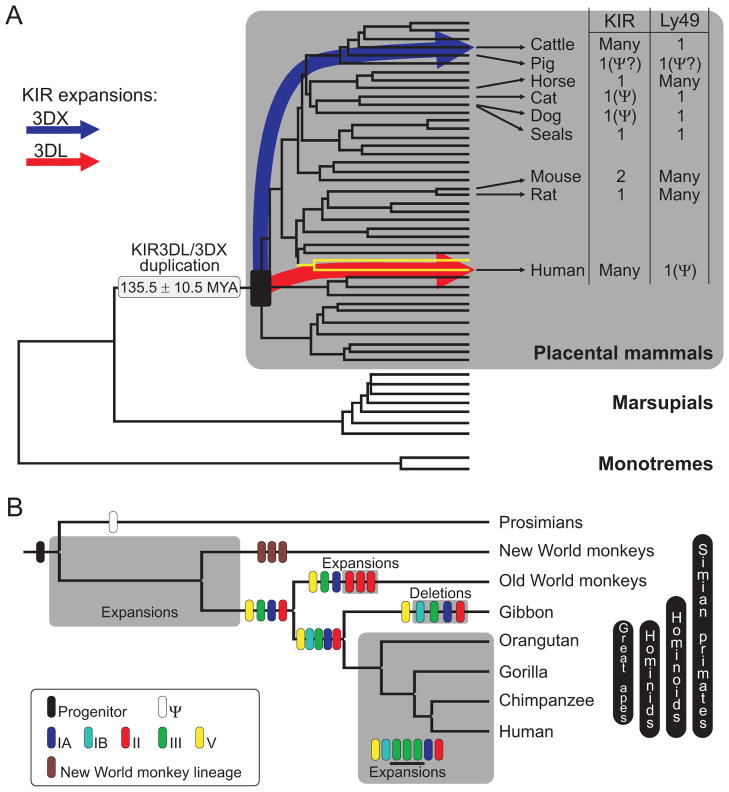Figure 1.
Evolution and variability of KIR and Ly49 NK cell receptors in mammalian species. A. On the right is shown the number of KIR and Ly49 genes in modern species. Emerging by gene duplication in an ancestral placental mammal, KIR3DL expanded in primates (red arrow) and KIR3DX expanded in cattle (blue arrow). The tree is adapted from that of Murphy et al (111). Ψ, pseudogene and the primate branches are yellow. MYA, million years ago. B. KIR diversification in primates. The primate KIR3DL progenitor (black) became a pseudogene in prosimians (empty box) but flourished in simian primates to form five hominoid lineages: IA (dark blue), IB (light blue), II (red), III (green) and V (yellow), and a unique New World monkey lineage (brown). Modern KIR haplotypes evolved through species-specific gene duplications (lineage II in Old World monkeys and lineage III in hominids) and deletions (lineages I–III in gibbons).

